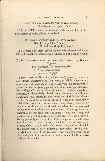No. 14. CUPRESSUS TORULOSA, Don, the Twisted or Bhotan
Cypress.
|
Syn. | Cupressus Cashmeriana, Hort.
| |
” | Nepalensis, Loudon.
| |
” | pendula, Griffith.
|
Leaves, very small, ovate, scale-formed, smooth, regularly and closely
imbricated in four rows, or slightly spreading, acute, more distant, much longer, and very
glaucous, with a yellow tint on the young plants, but of a more greenish hue, with a tinge
of grey on the adult ones. Branches, spreading, alternate, or irregularly placed along the
stem; lateral ones short, numerous, mostly in two rows, and slightly bent downwards; branchlets,
drooping on each side, and considerably subdivided; from two to six inches long, closely covered
by numerous oval-pointed, imbricated, scale-like leaves, arranged in four rows resembling small
green cord. Cones, globular, or somewhat oblong, from three-quarters to one inch long, and
produced in great abundance in dense clusters, each cone consisting generally of ten scales,
of the shape of a shield, with from four to six convex facets, rising into a kind of boss in
the centre, which is stiff and woody when ripe, and furnished in the centre with a short,
reflected, spiny point. Seeds, small, nearly flat, of a light brown colour, with a narrow wing
round the border, and from six to seven under each scale. Seed-leaves only two in number.
A fine pyramidal tree, with numerous short, slender, horizontal, or
sometimes deflected branches to near the ground, and drooping branchlets. It is found in great
abundance in Northern India, at elevations of from 4000 to 8000 feet.
It grows to a great size; trees from ten to fifteen feet or more in
girth are common, and one at a place called ‘Urcho,’ in the Kothee State, north of
Simla, is said to be six or seven feet in diameter. Major Madden says the Lime Stone Mountains
of ‘Nynee Tal’ are covered from 4500 to 6200 feet with clumps of the most stately
trees, the height of many of them at least 150 feet, and all as straight as an arrow, with the
branches drooping slightly towards the ground, and so arranged as to make the tree appear a
perfect cone,—the largest specimen measured by him being 16¾ feet in girth at five
feet from the ground, the spread of its branches 24 feet on each side; but about 12 feet is the
average girth of the finer specimens at ‘Nynee Tal,’ where the tree is commonly
called ‘Raisulla,’ or King Pine. It seems to be unknown as an indigenous tree in
North-West Kamaoon, but in South-East Gurhwal it is in abundance at from 7000 to 8000 feet of
elevation. It is the ‘Soorui,’ or ‘Name Divine,’ of the Himalayas, and
the Weeping Cypress of travellers.
Timber, white, with a tint of red and yellow; is exceedingly fragrant, and
considered equal to that of the Deodar for durability. Bark, reddish brown, peeling off in numerous
long stripes, and frequently appears twisted, which is supposed to have suggested its specific name
(torulosa). The wood and branches are burnt in sacred rites, as incense, among the Hindoos, both to
please the gods, and scare away evil demons.
It is more or less tender in England, and has the following varieties :—
CUPRESSUS TORULOSA VIRIDIS, Hort.
This variety differs in having all its parts of a bright glossy green, and
rather slenderer than the species.
CUPRESSUS TORULOSA MAJESTICA, Hort.
|
Syn. | ”
| majestica, Knight.
|
This kind differs in nothing from the ordinary form of the species except
in its more robust appearance, being much larger in all its parts, and much hardier, and no doubt
is the larger kind from the mountains of Cashmere and Nepal.
CUPRESSUS TORULOSA NANA, Hort.
| Syn. | Cupressus | torulosa | elegans, Hort.
| | ” | ” | ” | religiosa, Knight.
| | ” | ” | religiosa | nana, Hort.
|
This variety differs from the species in being very much smaller in all its parts, more compact, and very dwarf.

|